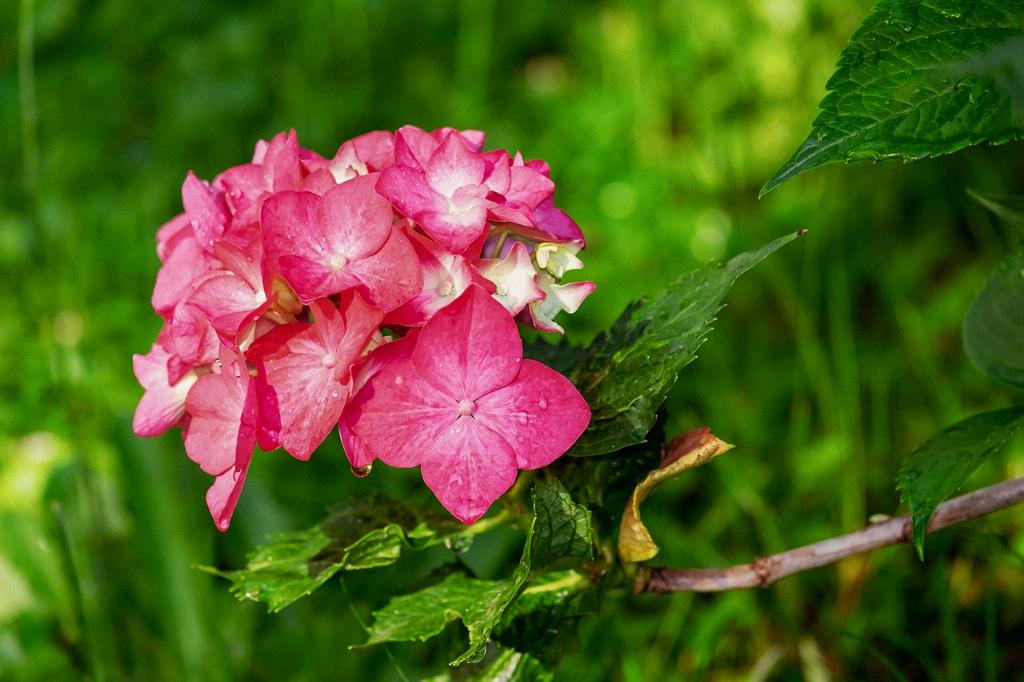Hydrangeas are a beloved staple in many gardens due to their lush foliage and vibrant blooms, and among the various types, the Limelight Hydrangea stands out as a particularly striking variety. This plant is renowned for its large, bright greenish-white flowers that transform into shades of pink, red, and burgundy as the seasons change. What makes Limelight Hydrangeas especially appealing is their adaptability and ease of care, which makes them a fantastic choice for both novice and experienced gardeners looking to add some pizzazz to their outdoor spaces. Throughout this article, we’ll dive into the essentials of cultivating Limelight Hydrangeas, from planting to pruning, ensuring your garden radiates beauty throughout the season.
Distinctive Features of Limelight Hydrangeas
The distinctive appeal of Limelight Hydrangeas lies in their unique floral display and robust growth. Unlike other hydrangea varieties that bloom in shades of blue or purple, Limelights offer a refreshing pop of lime green flowers in early summer, which gradually mature to pink and burgundy tones by fall. These hydrangeas are recognized for their conical flower shape, which differs markedly from the more rounded flower heads of many hydrangea species. Hardy and resilient, Limelight Hydrangeas can thrive in a range of climates, typically suited for USDA zones 3 through 9. With a potential to grow up to 6 to 8 feet tall and equally wide, they can serve both as a dramatic focal point or a lush, flowering hedge.
Best Practices for Planting Limelight Hydrangeas
When planting Limelight Hydrangeas, choosing the right spot and preparing the soil are critical steps that can’t be overlooked. These plants thrive in full sun to partial shade, with at least four hours of direct, unfiltered sunlight each day. They prefer rich, well-drained soil that keeps moisture consistent. To plant, dig a hole as deep as the root ball and twice as wide, mix in organic compost with the native soil at a 50/50 ratio to enhance nutrient content, and ensure the plant’s crown is slightly above ground level to prevent waterlogging. A thorough watering initially will help establish the plant, setting a foundation for vibrant growth.
Essential Care Tips for Thriving Limelight Hydrangeas
Caring for Limelight Hydrangeas is relatively straightforward, but they do have some specific needs that ensure they perform their best. Regular watering is crucial, particularly during the first few years and in hotter climates. However, it’s important to avoid overwatering, as Hydrangeas are prone to root rot. A layer of mulch around the base can help retain soil moisture and regulate temperature. Fertilizing in early spring with a controlled-release fertilizer formulated for trees and shrubs will promote healthy growth and optimal blooming. Keep an eye out for pests like aphids and mites, and diseases such as powdery mildew, which can be combated with appropriate fungicides and insecticides.
Pruning Techniques for Limelight Hydrangeas: Timing and Methods
Pruning Limelight Hydrangeas is essential for maintaining their shape and enhancing flowering. The best time to prune is late winter or early spring before new growth begins. Limelight Hydrangeas bloom on new wood, so cutting back about one-third of the older wood each year will encourage fresh, vigorous growth and plentiful blooms. Use sharp, clean pruning shears to make cuts just above a set of healthy buds, and aim to create an open, vase-shaped structure which allows light and air to penetrate the plant, reducing the likelihood of disease.
Common Issues and Solutions in Growing Limelight Hydrangeas
While generally low-maintenance, occasionally you might run into some issues when growing Limelight Hydrangeas. One common problem is flopping, especially when the shrub is overly fertilized or overwatered, leading to weak stems. To prevent this, ensure balanced fertilization and adequate drainage. If pests or diseases appear, treat them promptly with eco-friendly options whenever possible to keep the plants robust and healthy. Regular monitoring and early intervention will keep common problems at bay and help maintain the vitality of these stunning plants.
Creative Landscaping Ideas with Limelight Hydrangeas
Limelight Hydrangeas offer versatile landscaping options. Their striking appearance makes them excellent as stand-alone specimens or as part of a mixed border. You can also use them in mass plantings along a drive for an impressive display of seasonal colors. For smaller gardens, consider growing Limelight Hydrangeas in large containers, where they can add a dramatic presence on patios or balconies. Companion planting with other perennials that enjoy similar conditions, like hostas or ferns, can help fill in the mid and lower levels of border plantings, creating a lush, layered effect.
Varieties and Similar Plants to Limelight Hydrangeas
Beyond the standard Limelight, there are several other varieties and related species to consider. The ‘Little Lime’ hydrangea offers a more compact alternative, perfect for smaller spaces, reaching only 3 to 5 feet in height. For a twist on the traditional colors, the ‘Pink Diamond’ hydrangea transitions from white to a rich pink. Exploring different varieties can help add diversity to your garden while still enjoying the classic features of the hydrangeas.
Conclusion: Enhancing Your Outdoor Space with Limelight Hydrangeas
Incorporating Limelight Hydrangeas into your garden not only invites a spectacle of shifting colors but also enriches the space with minimal maintenance fuss. Whether used in borders, hedges, or as standalone features, their robust nature and stunning blooms are sure to make a garden statement. By following the strategies discussed, from choosing the right planting location to proper pruning techniques, you will ensure these splendid shrubs flourish, enhancing your garden’s aesthetic and value for years to come.

